Hidden Meanings of Hand Emojis in Text Messages
Hand emojis in digital communication convey a range of sentiments and cues. The "Thumbs Up" signifies agreement and positive affirmation.
The "Peace Sign" denotes non-violence and camaraderie. The "OK Hand" symbolizes approval but varies culturally.
"Clapping Hands" celebrate achievements, while the "Fist Bump" represents solidarity. The "Victory Hand" signifies success and unity, and the "Raised Hand" indicates participation or consent.
These symbols enhance engagement and clarity in interactions by transcending linguistic barriers. Understanding the nuanced meanings of these emojis can improve your digital communication.
Exploring further will uncover the depth of their communicative power.
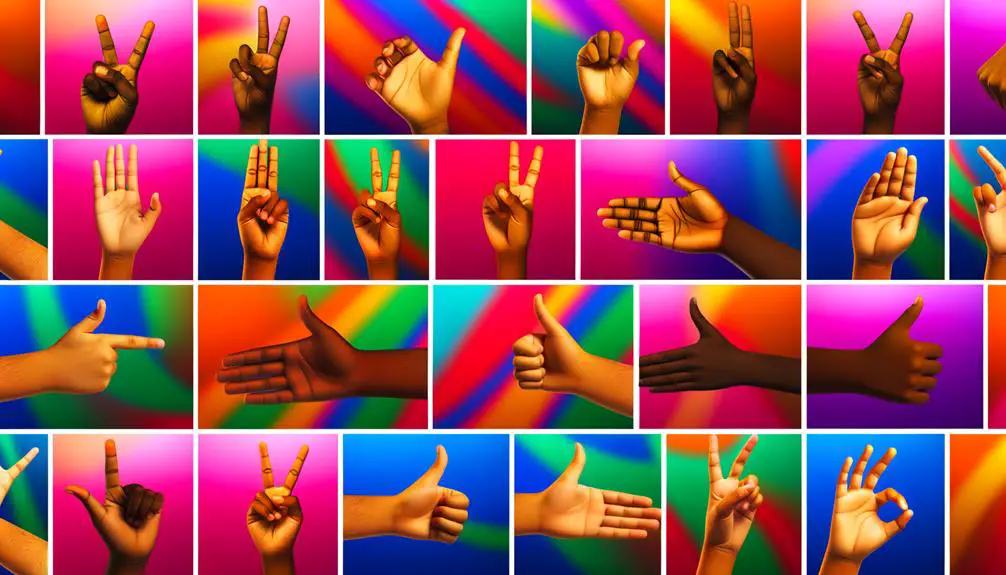
Key Takeaways
- The thumbs-up emoji signifies agreement, approval, or acknowledgment in text messages.
- The peace sign emoji symbolizes peace, camaraderie, and goodwill, often used to represent unity.
- The OK hand emoji conveys approval or agreement, but its meaning can vary across different cultures.
- Clapping hands emoji is used to acknowledge achievement, encouragement, or celebration, enhancing communication.
- The raised hand emoji signifies inquiry, participation, consent, or attention in digital interactions.
Thumbs Up
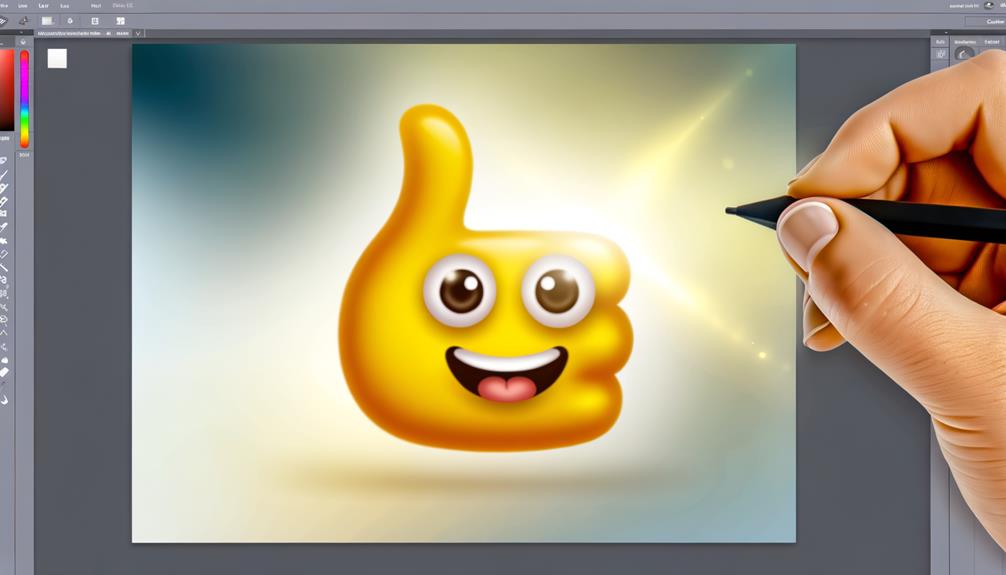
The 'thumbs up' emoji is frequently utilized to convey agreement, approval, or acknowledgment in digital communication. This icon, a simple graphical representation of a hand with the thumb extended upward, serves as a universal symbol of positive affirmation.
In professional settings, its usage spans affirming receipt of information, endorsing ideas, or signaling successful task completion. The emoji's versatility allows it to transcend language barriers, providing a succinct method for expressing concurrence or validation in text-based interactions.
However, the context in which it is employed can notably influence its interpretation, ranging from enthusiastic endorsement to perfunctory acknowledgment. In sum, the 'thumbs up' emoji is an efficient, visually intuitive tool for facilitating clear and immediate feedback in both personal and professional exchanges.
Peace Sign
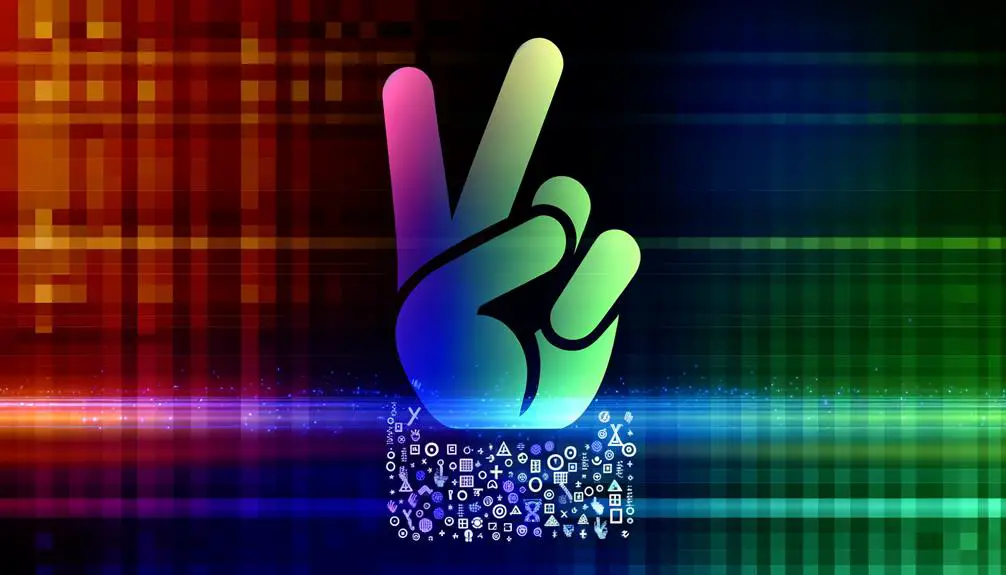
The peace sign emoji holds significant historical context, originating from the anti-war movements of the 1960s. Its cultural significance has evolved, representing not only peace but also camaraderie and goodwill in various contexts.
In modern usage, the peace sign emoji is frequently employed to convey a sense of calm, agreement, or positive affirmation in digital communication.
Historical Context
Adopted during the 1950s, the peace sign emoji traces its origins to the Campaign for Nuclear Disarmament (CND) in the United Kingdom. The symbol, designed by British artist Gerald Holtom in 1958, merged the semaphore signals for "N" (nuclear) and "D" (disarmament). This emblem quickly became synonymous with anti-war movements and later, broader peace initiatives.
| Aspect | Details |
|---|---|
| Origin | United Kingdom |
| Designer | Gerald Holtom |
| Year Created | 1958 |
| Initial Purpose | Campaign for Nuclear Disarmament |
The peace sign has transcended its initial political context to become a universal icon for peace and non-violence. This historical lineage enriches the contemporary use of the emoji, embedding it with profound significance beyond its digital representation.
Cultural Significance
In contemporary society, the peace sign emoji functions as a powerful symbol of harmony and non-violence, transcending linguistic and cultural barriers. Its significance extends beyond mere digital communication, embedding itself in the collective consciousness as a representation of ideals such as unity and coexistence.
The emoji's widespread adoption across various social media platforms underscores a universal yearning for peaceful interactions and mutual respect. Moreover, the peace sign's historical connotations, rooted in anti-war movements, amplify its cultural resonance in modern contexts.
Modern Usage
Building upon its profound cultural significance, the modern usage of the peace sign emoji reflects its integration into digital vernacular as a versatile tool for expressing sentiments of goodwill and solidarity. This emoji transcends cultural and linguistic barriers, facilitating nuanced communication in various contexts.
Contemporary applications include:
- Casual Conversations: Frequently used in social media interactions to convey a friendly or relaxed tone.
- Activism: Employed in digital campaigns to symbolize unity and shared goals.
- Conflict Resolution: Deployed in messaging to de-escalate tensions and propose harmony.
- Cultural Expressions: Adapted in art and media to signify a broader cultural embrace of peace.
Such diverse uses underscore the peace sign emoji's enduring relevance in modern communication.
OK Hand
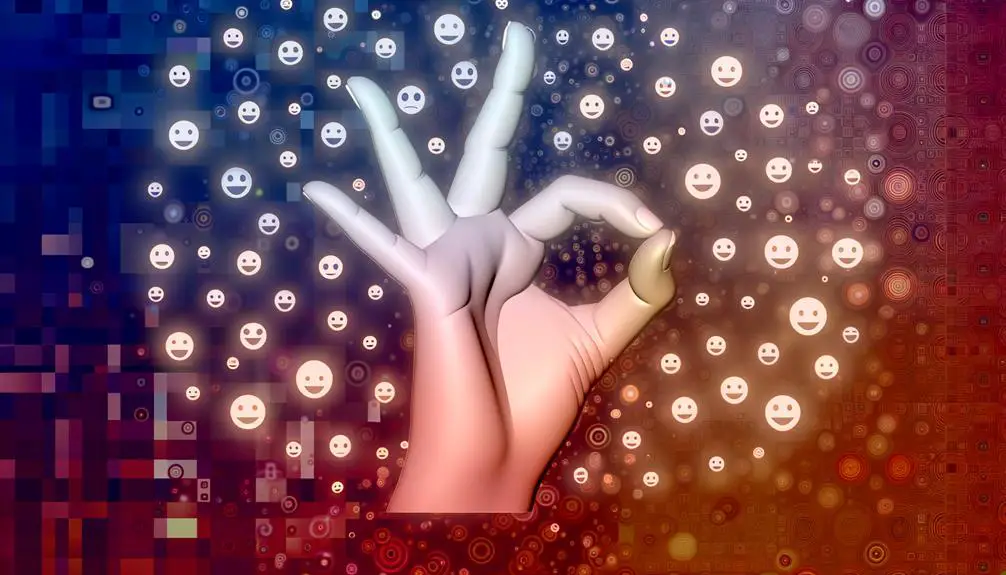
The 'OK Hand' emoji is frequently employed to convey approval or agreement within digital conversations, but its reception can vary significantly due to cultural connotations. This diversity in interpretation underscores the need for a careful analysis of its use in modern communication.
The emoji's widespread acceptance indicates its popularity, yet the risk of miscommunication remains a concern. Understanding the evolving trends in emoji usage is crucial for grasping how symbols like the 'OK Hand' can undergo shifts in meaning over time.
Cultural Contexts and Interpretations
Different cultures often interpret the OK hand gesture in varying ways, leading to diverse meanings and potential misunderstandings. Analyzing these cultural contexts reveals the complexity of this seemingly simple symbol:
- United States: Commonly signifies agreement or that everything is satisfactory.
- Japan: Often denotes money, as the circular shape resembles a coin.
- Brazil: Considered an offensive gesture, equivalent to an obscene insult.
- France: Can imply worthlessness or zero, depending on context.
Such cultural variations necessitate careful consideration when using the OK hand gesture in international communications. Misinterpretations may arise, potentially causing confusion or offense. Understanding these nuanced interpretations is essential for effective and respectful global interaction.
Popular Digital Usage
Examining the popular digital usage of the OK hand emoji reveals how its meaning has evolved in modern communication platforms. Initially representing approval or affirmation, the emoji has gained multifaceted interpretations across various contexts.
In casual conversations, it often signifies agreement, satisfaction, or assurance. However, its use has expanded to include sarcasm or irony, depending on the accompanying text or tone.
Moreover, social media trends have occasionally repurposed the emoji for niche or subcultural expressions, sometimes leading to misunderstandings. This versatility underscores the dynamic nature of digital communication, where symbols can acquire diverse connotations.
Understanding these nuances is essential for effective and accurate digital interaction, reflecting the broader complexities inherent in contemporary online discourse.
Evolving Emoji Trends
Recent shifts in emoji usage patterns reveal significant transformations in the interpretation and application of the OK hand symbol. Originally a benign gesture indicating agreement or approval, its meaning has evolved due to cultural and sociopolitical influences.
The following points highlight the current trends:
- Cultural Sensitivity: Increased awareness around the symbol's appropriation by certain groups has led to cautious use.
- Contextual Adaptation: Users now employ the OK hand emoji in specific contexts to convey irony or sarcasm.
- Platform Variation: Different social media platforms exhibit varied interpretations and frequencies of its usage.
- Generational Differences: Younger demographics often repurpose the emoji, diverging from traditional meanings.
These evolving trends underscore the dynamic nature of digital communication symbols.
Thumbs Down

The 'thumbs down' emoji universally conveys disapproval, rejection, or negative feedback in digital communication. This symbol is an effective means of succinctly articulating dissatisfaction without the need for extended text. Its application ranges from personal interactions to professional environments, where it can serve as a quick response to indicate disagreement or critique.
From an analytical perspective, the 'thumbs down' emoji provides a non-verbal cue that can influence the tone of a conversation, often leading to a more serious or reflective dialogue. This hand gesture's historical origins, rooted in ancient Roman gladiatorial events, underscore its enduring power as a symbol of disfavor.
In contemporary usage, it remains a potent tool for conveying negative sentiment efficiently.
Clapping Hands
The clapping hands emoji serves as a versatile symbol within digital communication, largely conveying expressions of approval and celebratory sentiments.
This emoji is frequently utilized to acknowledge achievements, commend efforts, or join in collective celebrations.
Its widespread usage underscores the importance of non-verbal cues in enriching text-based interactions.
Expression of Approval
Clapping hands emojis are frequently employed to convey enthusiastic approval and support in digital communication. This symbol serves as a versatile tool for expressing positive reinforcement across various contexts. The following points elucidate its usage:
- Acknowledgment of Achievement: Utilized to recognize accomplishments, whether academic, professional, or personal.
- Encouragement: Provides moral support, often used to motivate individuals in challenging situations.
- Agreement: Indicates concurrence with a statement or opinion, reinforcing collective approval.
- Celebration of Milestones: Marks significant life events or milestones, underscoring communal joy and solidarity.
The clapping hands emoji's ability to encapsulate a wide range of affirmative sentiments underscores its utility in fostering positive digital interactions. This multifaceted symbolism enhances its communicative effectiveness in contemporary text-based exchanges.
Celebratory Gesture
Often employed to convey celebration, the clapping hands emoji serves as a powerful digital symbol of collective joy and shared moments of triumph.
This emoji is frequently utilized in digital communications to express congratulations, recognition, and support.
Its visual representation—hands in mid-applause—effectively encapsulates the essence of acknowledgment and approval, resonating deeply in contexts ranging from personal achievements to professional milestones.
The clapping hands emoji transcends linguistic barriers, enabling diverse user groups to participate in a universal form of celebratory expression.
Raised Hand
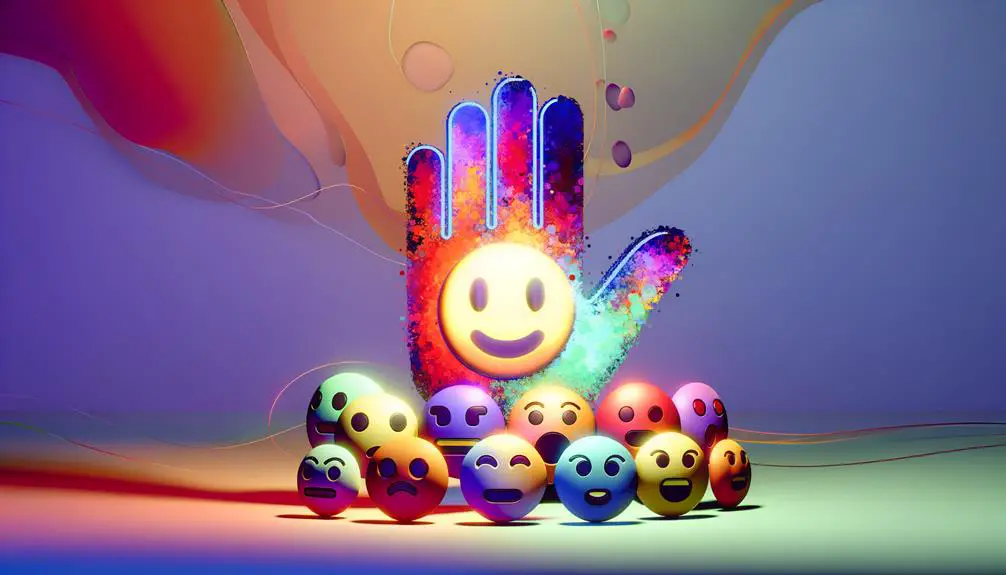
A raised hand emoji typically signifies a desire to ask a question, offer a contribution, or signal agreement in digital communications. This versatile symbol is employed across various contexts to enhance clarity and engagement.
From an analytical perspective, its usage can be categorized into four primary functions:
- Inquiry: Signaling the intent to ask a question or seek clarification.
- Participation: Indicating willingness to contribute to a discussion or activity.
- Consent: Expressing agreement or approval of a proposal or statement.
- Attention: Capturing the attention of the recipient, often used to highlight the sender's active presence.
Understanding these nuanced applications enables more effective and precise communication, particularly in professional or educational settings where clarity and engagement are paramount.
Fist Bump
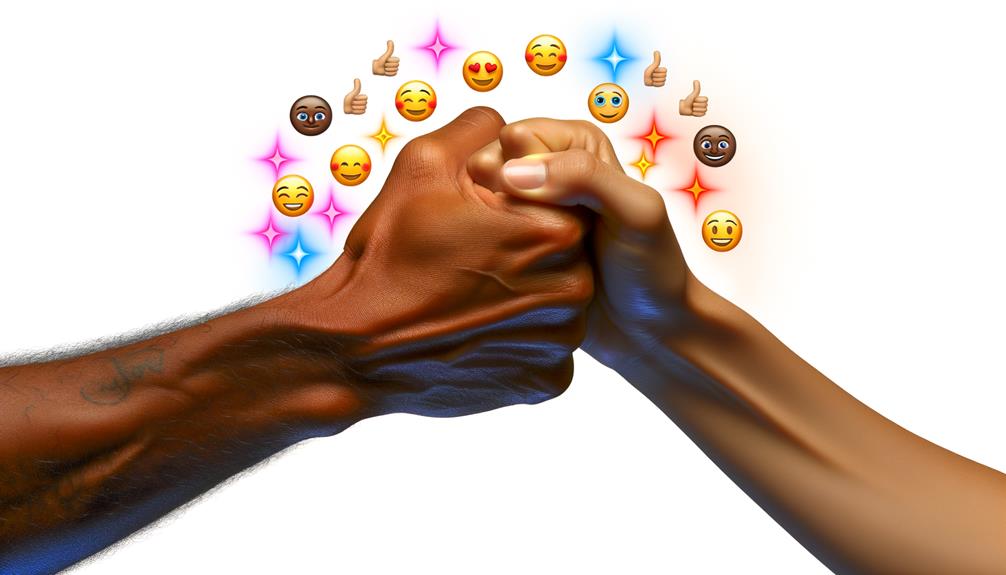
Symbolizing solidarity and mutual support, the fist bump emoji serves as a digital representation of camaraderie and agreement in text-based communications. It encapsulates a gesture commonly used in real-life interactions to convey approval, mutual respect, or a sense of partnership.
The emoji's usage extends beyond casual conversations, finding relevance in professional environments where informal affirmations are appropriate. Its visual simplicity and universal recognition make it an effective tool for succinctly expressing concurrence or encouragement without necessitating additional context.
The fist bump emoji can bridge cultural and linguistic barriers, providing a universally understood sign of positive reinforcement. Essentially, it functions as a versatile symbol of unity and shared purpose, enhancing interpersonal connections in digital discourse.
Victory Hand

The victory hand emoji, depicted as a raised hand with the index and middle fingers extended to form a V shape, serves as a digital emblem of triumph and success in text-based communications. This symbol, rooted in historical and cultural contexts, conveys various meanings depending on the scenario.
Key interpretations include:
- Victory and Success: Mainly signifies winning or achieving a goal.
- Peace and Solidarity: Often used to promote harmony and unity.
- Casual Greeting: Informally represents a friendly hello or goodbye.
- Pop Culture Reference: Frequently associated with the 1960s counterculture and peace movements.
Understanding these nuances enhances the effective use of the victory hand emoji in diverse digital interactions, ensuring the intended message is accurately conveyed.
Waving Hand
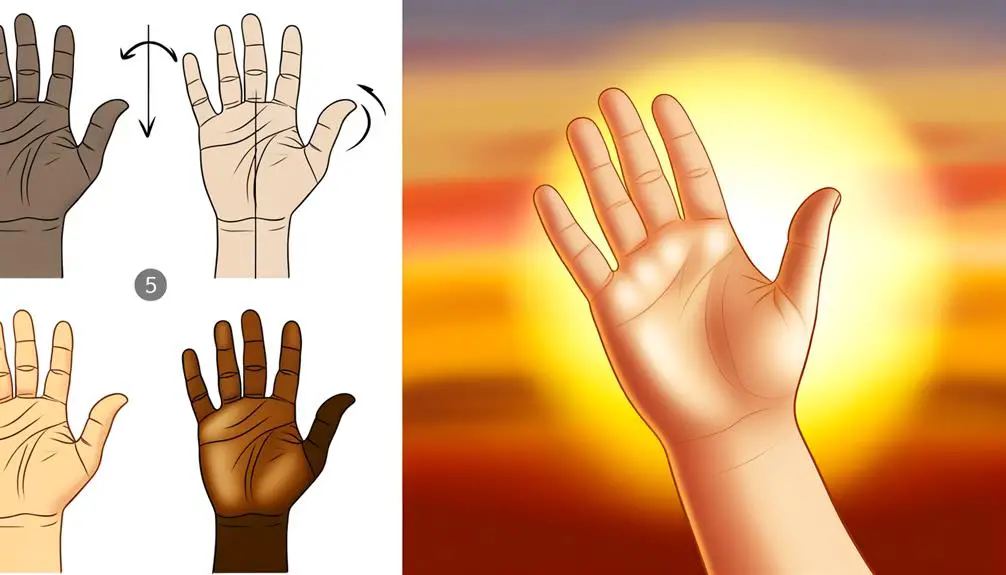
Representing a gesture of greeting or farewell, the waving hand emoji is a versatile symbol in digital communication. Its primary function is to convey a sense of acknowledgment, whether welcoming someone or bidding adieu.
This emoji is frequently employed in various contexts, ranging from casual conversations to professional exchanges, underscoring its adaptability. The waving hand can also signify an attempt to capture attention or initiate interaction.
In business communications, it can soften formal tones, providing a touch of cordiality. Additionally, the emoji's universal recognition facilitates cross-cultural understanding, making it an effective tool for bridging communication gaps.
Its simplicity and clarity contribute to its widespread usage, embodying a fundamental human gesture in the digital age.
Praying Hands

Often interpreted as a gesture of gratitude, supplication, or respect, the praying hands emoji serves multiple nuanced functions in digital communication. This symbol, widely recognized across various cultures, has several contextual applications:
- Expression of Thankfulness: Utilized to convey appreciation or thankfulness in conversations.
- Request for Support: Employed to seek moral or emotional support from others.
- Sign of Respect: Used to show reverence or honor towards someone or something.
- Spiritual Connection: Indicates a spiritual or religious sentiment, often used in prayers or blessings.
Understanding the diverse applications of the praying hands emoji enhances effective digital communication. Its versatile nature allows it to bridge emotional and cultural gaps, making it an invaluable tool in the digital lexicon.
Conclusion
In the intricate tapestry of modern digital communication, emojis function as the visual dialect that transcends linguistic boundaries.
These symbols, akin to allegorical figures in classical literature, convey nuanced emotions and intentions.
From the approving 'Thumbs Up' to the contemplative 'Praying Hands,' each emoji encapsulates distinct sentiments, enabling a richer, more immediate exchange of meaning.
Consequently, emojis serve as the contemporary hieroglyphics, streamlining and enriching the discourse in an increasingly interconnected world.





